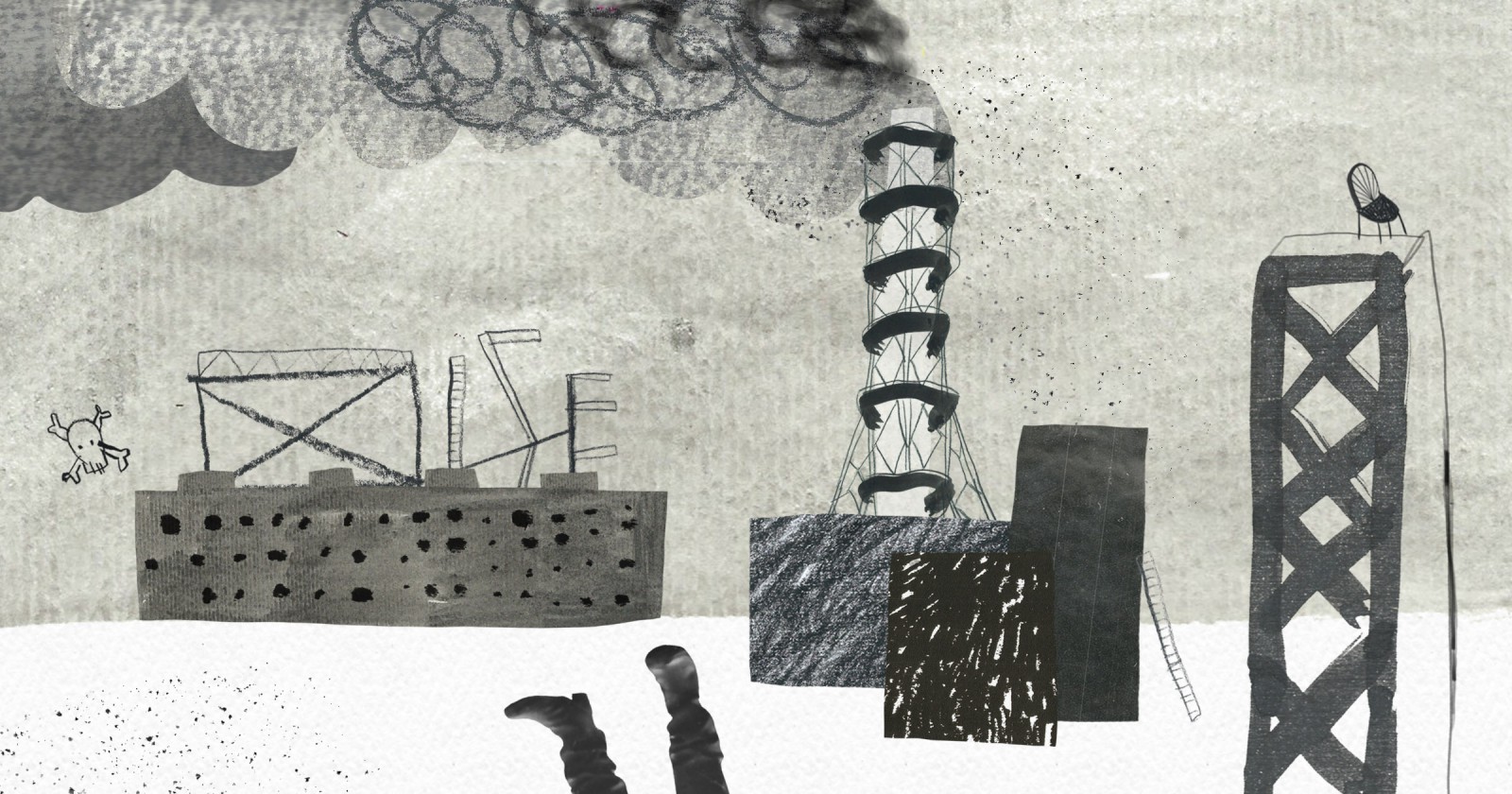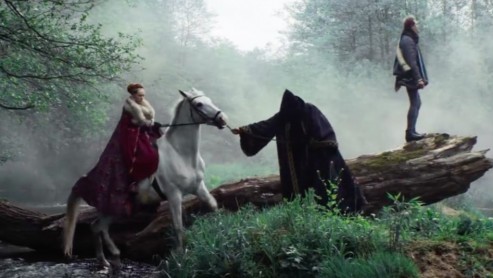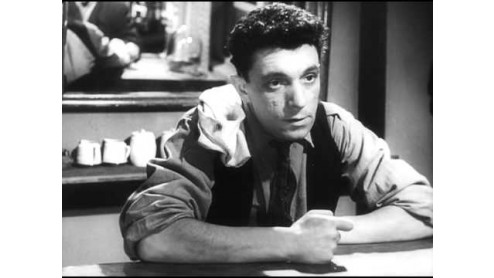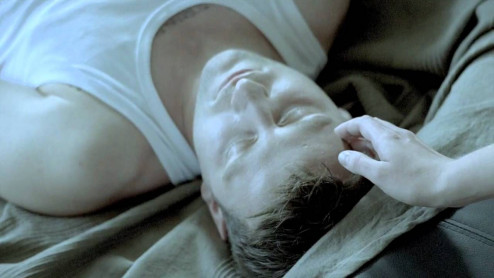
Chernobyl—History and Artistic License. Is the New HBO Hit Show Historically Accurate?04.06.2019
“The fact that the creators of the series allowed themselves some artistic license does not in any way diminish its overall value,” says Dr. Paweł Sekuła, an expert of the Chernobyl disaster, in an interview about HBO’s first post-Game of Thrones hit and its historical accuracy.
Consider the following pitch: “The writer behind a number of hit comedies to produce gripping TV drama with former rapper, known for his proclivity for funky beats.” Would you take it seriously or think it an April Fool’s joke? Although the dust still hasn’t settled after the "Game of Thrones" finale, still the biggest TV event of 2019, it seems that drama fans have found a worthy contender—the same one described by the pitch above. "Chernobyl", the five-episode opus created by Craig Mazin and Johan Renck (once known under his artistic pseudonym Stakka Bo), climbed to the very top of the IMDb Top 250 TV list soon after its premiere and long before the end of its run (de facto securing the leading spot against IMDb rules). The miniseries has garnered considerable acclaim from online critics and proved extremely popular with media and audiences alike (although official ratings have yet to be released by HBO).
How did Craig Mazin, a screenwriter known for his work on franchises like "The Hangover" or "Scary Movie", turn the events at Chernobyl into a pet project, so to speak? “I already peaked as far as comedy is concerned,” Mazin once said in an interview. And, as luck would have it, soon after deciding to transition away from comedy, Mazin came upon the story of the accident at Chernobyl—an event which would grow to consume him like an obsession. Not long after he began researching the subject in 2014, he realized that the story was still mostly untold, and that he was uniquely positioned to finally introduce the world to the biggest nuclear disaster in the world. Before drafting the screenplay, he pored over official government reports, watched numerous documentaries, and read the entire body of literature on the Chernobyl disaster (including Svetlana Alexievich’s "Voices from Chernobyl"), spoke at length with nuclear physics professors, and finally visited the Exclusion Zone surrounding the ruined station. “We had a general standing philosophy from the beginning, which was: Accuracy is everything to us,” Mazin said in his interview with Vice. And it seems that they succeeded, at least in this respect—the miniseries feels heavy with verisimilitude and the events unfolding onscreen feel terrifyingly plausible. In the same interview, Mazin also revealed that he wanted the series to precisely explain the chain of events that led to the accident. Has he succeeded in that endeavor?
The very fact that a non-documentary narrative has prompted such lively, fierce debates around the veracity of the depiction is testament enough to the success of the production. No similar discussions ever accompanied previous fictional and documentary efforts dealing with Chernobyl.
“Well, the miniseries will definitely not be providing a comprehensive inquiry into the disaster in the context of the test conducted at the Chernobyl Atomic Energy Station on the night of April 26. The producers ultimately chose to portray one of many versions of events—which had its own set of people who were reportedly to blame for the explosion—and then pared it down somewhat. That’s not an accusation, by the way, because they didn’t actually have to do that. On the contrary, diving too deep into the details, particularly in a TV miniseries, would make it indigestible for the average viewer, with a lower than average grasp of the vagaries of nuclear power generation,” said Dr. Paweł Sekuła from the Jagiellonian University’s Ukrainian Studies Chair, author of the book "Liquidators of Chernobyl. The Untold Stories". “However, the very fact that a non-documentary narrative has prompted such lively, fierce debates around the veracity of the depiction is testament enough to the success of the production. In Russia, pro-government media went as far as calling the miniseries a typical Western propaganda attack, besmirching the good name of Russia and the Soviet Union. No similar discussions ever accompanied previous fictional and documentary efforts dealing with Chernobyl—and there were quite many,” Sekuła added.
Because historical accuracy of "Chernobyl" is such a hotly contested topic, we decide to check how the narrative stacks up against the historical record. We asked Dr. Sekuła to help us verify whether the story aligns with the facts.
“The production crew clearly went to great lengths to make the miniseries historically accurate, and it shines through especially in the set design, the VFX work (eg. The exploded reactors particularly comes to mind), and the many minute details, like troop uniforms or the specialist equipment used for decontamination work. The crew was most likely helped along the way by the very nature of the Soviet system, which prized uniformity above all and produced identical goods across the entire Union, from ball pens all the way up to nuclear facilities,” said the expert. Sekuła also discussed the locations the creators used. “The Ignalina Nuclear Power Plant, decommissioned only in 2009, stood in for the Chernobyl station. Both facilities used the same RBMK-type reactor (the acronym translates to “high power channel-type”). Pripyat, on the other hand, nowadays a collection of abandoned buildings being inexorably reclaimed by nature, was “played” quite well by the Fabijoniškės neighborhood of Vilnius, as both places shared a similar architectural style. And my opinion about the accuracy isn’t exactly swayed by the fact that despite the meticulous preparations, some details still slipped through the cracks, like plastic windows in the apartments or other artifacts of modernity,” Sekuła added.
The black, oily smoke is one more example of taking artistic license, devised to suggestively visualize the spread of radionuclides. These measures were necessary to portray something that cannot be seen with the naked eye.
If the production crew indeed made an excellent job creating a snapshot of life in the Soviet Union in the eighties, our next question should be—what did the story get wrong? After all, the alleged historical inaccuracies are at the root of most of the debates raging around the miniseries right now.
“One example is the helicopter crash during one of the sand-and-boron-dropping sorties which were supposed to put out the burning reactor. A Mi-8 helicopter has indeed snagged a crane cable while approaching Unit Four and fell from the sky, killing four crewmen, all of them Afghanistan veterans. The accident, however, took place in October of 1986, long after the sand drops ended. The pilot was blinded by the sun, rather than smoke from the reactor. That’s another thing—the black, oily smoke is one more example of taking artistic license, devised to suggestively visualize the spread of radionuclides. These measures were necessary to portray something that cannot be seen with the naked eye,” Sekuła pointed out. He also mentioned the fictional character of Ulana Khomyuk, played by Emily Watson. According to the creators, Khomyuk was an amalgamation of many different scientists, intended to represent the efforts and views of the academic community that differed from those held by the chemist Legasov or the Party apparatchik Scherbina. According to Sekuła, however, the knowledge she seemed to have possessed a priori in a situation that had everyone, including the biggest minds in the field, scrambling for answers, was a little annoying.
"The Liquidators of Chernobyl" author also pointed out a handful of other instances where the producers abandoned historical accuracy in favor of turning up the tension or using specific genre tropes. “No Pripyat residents (including children) were admitted to the hospital in Pripyat on April 26, only firemen, plant operators, and members of the plant’s security complement were brought in.” Sekuła also spoke about the scene where liquidators are clearly surrounded with what seems to be hundreds of liters of alcohol.
“Already in May of 1986 the Government Commission designated the thirty-kilometer zone around Chernobyl a ‘sobriety zone.’ The move itself proved rather futile because booze was still smuggled into the Exclusion Zone from outside. Plus, returnees and settlers were known for making moonshine and selling it to the soldiers, but doing so clandestinely because it was a punishable offense and carried a severe prison sentence. It’s very unlikely that soldiers would be near-blackout drunk in the middle of the day on camp grounds, especially given the presence of KGB detachments (as they were portrayed in Episode 4–ed. note).” Sekuła also mentioned the memorable scene in which Legasov tries to countermand Scherbina’s command to the pilots to fly over the reactor and through the column of smoke coming from its burning interior. “Many eyewitnesses accounts testify to Scherbina’s highly impulsive nature, but the scene in which the deputy chairman of the Soviet Council of Ministers threatens to have Legasov thrown out of the helicopter is pure fiction,” the scholar said. “Like the scene, where naked miners mill about in the direct vicinity of the reactor,” he added. Sekuła also mentioned one other instance of the series’ creators distorting reality for dramatic purposes.
he series does an excellent job of portraying the atmosphere that gripped the Soviet Union during the liquidation: the fear, the uncertainty, and the creeping suspicions, augmented by pervasive lies and cynical government propaganda.
The scholar emphasized that these and other misrepresentation did not adversely impact the overall value of the miniseries. On the contrary, some of the fictional elements or plot lines allowed the creators to better flesh out the emotions of the characters and the aura of the days and months following the disaster. To illustrate his point, Sekuła brings up one of the scenes in the Moscow hospital where the firemen from Chernobyl were brought: “One change that hit me particularly hard, and which seemed to elude most critics of the series’ accuracy, was featured in the incredibly moving and intimate scene where Ludmilla Ignatenko is looking out the window of her husband’s room in Hospital Number Six and describing the wonderful view of Moscow he supposedly had from there—while in reality looking at just another facade of the facility. The truth is that the hospital’s upper floors really had a beautiful view of the capital, as evinced by Ludmilla’s own eyewitness account. But that particular misrepresentation had a higher purpose—to serve as metaphor of not just the disaster itself, but the situation in which the victims found themselves in its wake, one defined by a sense of pervasive powerlessness and utter vulnerability.
But these are just details. In our interview, Sekuła also discussed his view of the reasons behind the overwhelming success of "Chernobyl". What made Mazin and Renck’s miniseries so powerful and so magnetic?
“The producers realized what their forerunners didn’t, that the key to a successful narrative about Chernobyl lay in the portrayal of the thousands of average people who were involved in the events and subordinating the main narrative to events that really happened,” Sekuła said. “The miniseries’ biggest advantage is its focus on the tragic, horrifying situation that people involved in the Chernobyl cleanup found themselves in and its frank portrayal of the inner workings of the Soviet state and its ability to handle major crises, from the plant’s managerial staff all the way up to the top echelons of power in Moscow.”
We should also note how well Mazin and Renck managed to communicate to the audience the science behind the operation of a nuclear reactor and the chain of events that led to its explosion, using primarily the character of Legasov to deliver the necessary exposition, and do so without slowing the narrative down in any tangible way. Sekuła also brings up another impressive feat that the producers pulled off: “The series does an excellent job of portraying the atmosphere that gripped the Soviet Union during the liquidation: the fear, the uncertainty, and the creeping suspicions, augmented by pervasive lies and cynical government propaganda. It’s a real eye-opener to people who had no prior knowledge of the realities of live in the Soviet Union,” the scholar added.
It seems, therefore, that historical accuracy, at least in filmmaking, does not necessarily imply a slavish faithfulness to the historical record. In some instances, a narrative taking some liberties with history may end a champion of truth, precisely because of the impact it has on the audiences—a paradox that the producers behind "Chernobyl", given the success of the miniseries, might have been well aware of.
see also
- Moon Rocks Auctioned Off for $855,000
News
Moon Rocks Auctioned Off for $855,000
- Disney To Do a Series of Reboots. Plans Include ”Home Alone”

News
Disney To Do a Series of Reboots. Plans Include ”Home Alone”
- See Wes Anderson’s "Grand Budapest Hotel" Storyboards

News
See Wes Anderson’s "Grand Budapest Hotel" Storyboards
- "Smog Wars": The Smell of Winter
Trends
"Smog Wars": The Smell of Winter
discover playlists
-
Papaya Young Directors top 15
 15
15Papaya Young Directors top 15
-
Andriej Tarkowski
 02
02Andriej Tarkowski
-
Martin Scorsese
 03
03Martin Scorsese
-
 05
05
